Mt. Fuji: Top of Japan
There is an old Japanese proverb about Mt. Fuji that goes something like this;
“A wise man climbs Fuji-san once, only a fool climbs it twice.”
一度も登らぬ馬鹿、二度登る馬鹿
If you’ve hiked Mt. Fuji, you would certainly understand. Above the mid-point of the mountain it’s all ash and rock and it’s really not that pretty to look at.
This is not to say I regret hiking up Mt. Fuji, quite the opposite. My trip there was one of the most memorable experiences in Japan. I wouldn’t trade it for anything. I got to go with over a dozen good friends. We were well organized. The weather was clear for the whole hike. The sunrise was stunning.
I even have some video of our trip:
If you want to attempt the hike, there are a few things you will need to do to prepare for it. It’s not as a simple as just doing a day trip from Tokyo. It’s a serious climb to the summit, which is the highest peak in Japan at 3,776m (12,388 feet).
Not everyone is up for the challenge. Here’s a quick check list to make sure you’re ready:
- You are in reasonably good shape. Most people need around 8 to 10 hours to make it to the top from the 5th station.
- Having the right supplies. There is a list below of what you should take with you to make your climb comfortable and successful.
- It’s the right time of year. Jump to the section below for that information and why you should NOT hike in the off season.
If a hike to the top is not for you, there’s no shame in that. You can still visit the mountain by taking a bus to the 5th station, which is half way up. An even better thing to do is to explore the Fuji Five Lakes region, which has numerous beautiful vistas of the area. In all honesty, viewing Mt. Fuji from afar is much rewarding than seeing it up close.
Preparing For Your Visit To Mt. Fuji
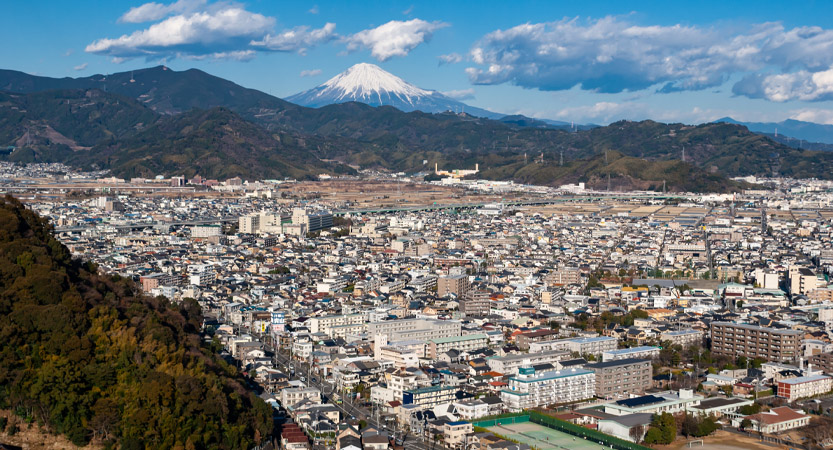
If you’re planning to hike to the top of Mt. Fuji you will need to be prepared. Here’s a list of 20 plus things that you should bring with you for the climb.
I’ll break them into 3 groups; essential, recommended, and optional.
*These supplies are per person, not group.
Essential
- Backpack; to carry your gear.
- Water; 2 liters, at least.
- Winter jacket; you might not need it as you’re climbing, but once you’re on top and not moving, the low temperatures and strong winds will cut right through you. The winds especially can often make it feel colder than it actually is. There is also little shelter on top, so it’s up to you to keep yourself warm.
- Good shoes; this might seem like a no-brainer, but I saw a stupid amount of people attempting to climb in flip-flops. The terrain is rocky, steep, and slippery. Add in the potential of sudden, strong wind gusts and it’s clear why proper hiking shoes with good ankles support are a must.
- Winter hat & gloves; even in the summer it will be pretty cold on top of Mt. Fuji. It’s not uncommon for the temperature to dip below freezing. Gloves are especially recommended as they will not only protect against the coldness, but against the jagged rocks on the steep passages.
- Long pants; you can hike in shorts, like I did, but once you get to the top and stop moving it get mighty cold. Having pants is a must.
- Head lamp /flash light; it’s dark on the trail at night and there are no lights on the path. I highly recommend a head lamp over a flash light because it frees up your hands.
Highly Recommended
- Food; you will be hiking a long time with few places to buy food. I recommend dried fruits or nuts, as these are things that will give you a lot of energy. A few snickers bars are not a bad idea either. They satisfy!
- Extra batteries; you will need them for your light source. Be prepared with an extra 2 or 3 sets.
- Goggles or some eye protection; it’s windy and dusty on the mountain. The wind gusts can be incredibly powerful and the top is mostly vocalic ash.
- Rain gear; this might seem really unnecessary but mountain weather is unpredictable and can rapidly change.
- Socks; avoid cotton socks. Instead, wear a thin pair of nylon socks under a thick pair of hiking socks. The nylon takes the sweat off your skin and will also fit snug to your feet. This will stop the outer layer rubbing directly on your skin, hopefully saving you from blisters. Consider taking an extra pare of socks for the decent. Merlino wool or Smartwool are pretty good choices for hiking socks.
- Toilet paper; you will find all the bathrooms lacking any comforts.
- Money, at a minimum you will need some for the toilets. They are pay-per-use!
- Plastics bags; to carry garbage. There are NO trashcans on Mt. Fuji.
Optional, But Still Recommended
- Camera; don’t let this once in a lifetime adventure slip by without some photos commemorating the journey.
- Walking stick/hiking poles; while optional, they can be incredibly helpful. They can be bought at the 5th station.
- Sunglasses & sunscreen; once that sun comes up it’s strong.
- Minor medical supplies; stuff like band-aids, moldskin, ibuprofine , etc.
- Heat packs; you will be wishing you had a few while waiting in the cold for the sun to rise.
- Oxygen bottles; while Mt. Fuji is not even close to one of the highest mountains you can traverse, a good number of people do get sick on top, myself included. Oxygen can really help you get over the minor altitude sickness you will probably experience.
A Short Window of Opportunity
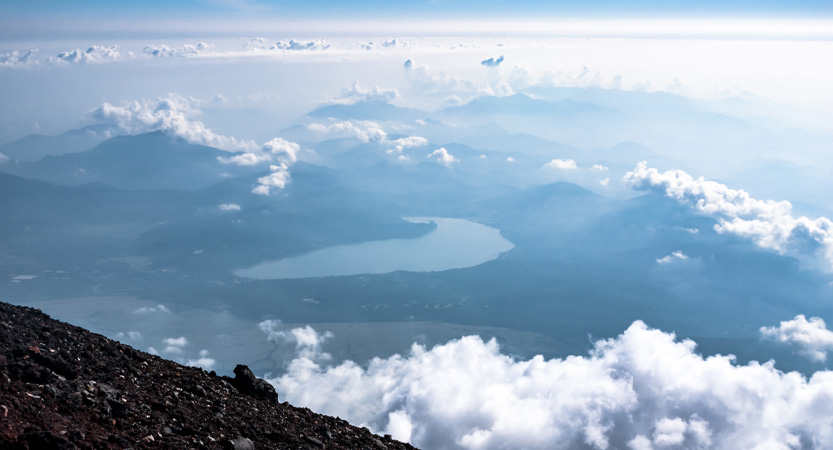
The official hiking season for Mt. Fuji is quite short, only spanning from June to early September. You might be thinking that a good way to beat the crowds is to just hike the mountain in the off-season. It’s not technique illegal to do and there are a handful of hikers that do it ever year. While it is possible to hike off season, it’s far more dangerous. That might seem a tad overblown, but it’s not.
The weather won’t be much different a few days before or after the hiking season. That is true, but even during the official season the weather can be quite harsh. Storms can seemingly appear out of nowhere and there aren’t many areas you can take shelter in. The few places one can shelter in, the ten stations dotted along trail, will all be closed and locked up in the off-season.
The wind can also be a huge issue. Gusts of wind have been known to blow hikers clear off the mountain to their deaths. Even experienced mountaineers have come to their end while training on Mt. Fuji in the off-season. In fact, nearly a year goes by without a fatality on the mountain.
All that said, it’s not just the weather. The main reason why the hike is far more dangerous is because there won’t be any staff on the mountain (above the 5th station) to help if an emergency occurs. Effectively, you will be totally on your own.
Another Reason
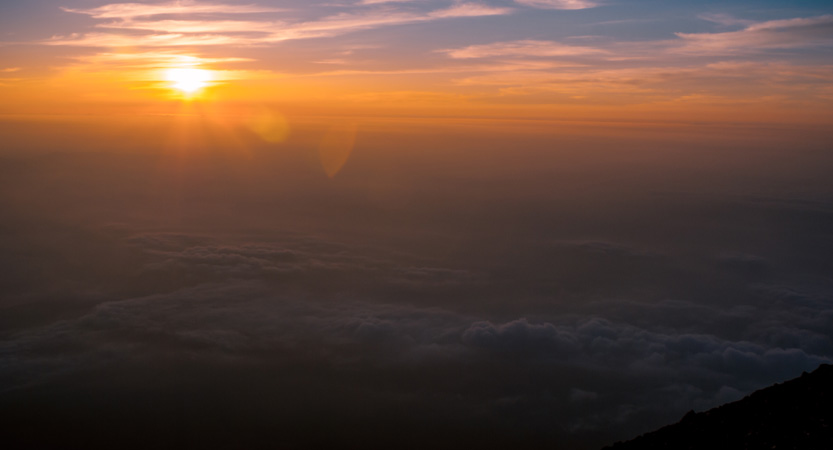
The above are reasons enough why you shouldn’t hike in the off-season, but there is another reason.
The hike on Mt. Fuji feels more special when it’s s a group experience. As a traveler who strives to have most every place to myself, this feels like a strange thing to say, but it’s the truth.
Fuji-san is not a beautiful mountain to see up close. Its a volcano. Very dead, black, and ashy. It’s quite empty and devoid of life, in every sense of the word. Being around other people fills the mountain with life. Feeling the collective reactions of people seeing the sunrise is almost religious. Words can’t describe how moving the experience is.
An older Japanese man right behind me began crying as the sun crested the horizon. This is just one of those experiences that has to be lived and can’t be described in words by any measure.
Getting There & Starting Your Hike
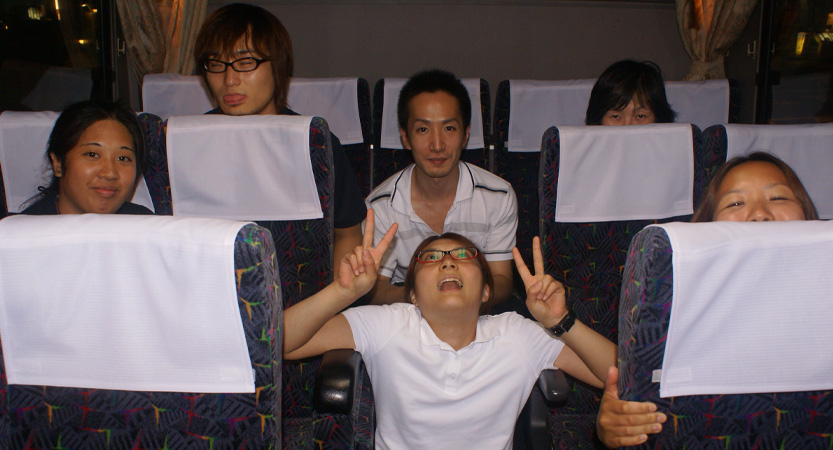
As a tourist, the first thing you need to work out is where you plan to start your hike and how you’re going to get there. The mountain has four trails, located on different sides of the volcano. The trails are color coded, which is helpful when you need to descend and arrive at the correct pick-up point.
- Yellow: Yoshida Trail (Yamanashi Prefecture)
- Red: Subashiri Trail (Shizuoka Prefecture)
- Green: Gotemba Trail (Shizuoka Prefecture)
- Blue: Fujinomiya Trail (Shizuoka Prefecture)
Each trail has has 10 stations along the path, which provide shelter and resting points. The stations are not evenly spaced apart, but they do help give a sense of awareness of where on the mountain you are and how far you still need to go.
Cheat And Win
Now, this might sound like a huge cheat, but most people start their hikes at one of the four 5th stations, not at the base. The Yoshida trail (yellow) has the highest number of hikers because it’s the most easily accessible from Tokyo. You can take one of the other trails, but you’ll need to travel longer and do some transfers to get there. If you wish to start your hike at the base of Mt. Fuji, you can. This will add another six plus hours to the hike, in addition to the extra time you’ll need on public transportation to get there.
The Best Way To Get To Mt. Fuji
There are a number of ways to get to Mt. Fuji, from car to train/bus combinations. If you want to take the cheapest and easiest option, that would be the direct bus.
Direct buses during the climbing season (July 1st to September 10th) depart from the Shinjuku Expressway Bus Terminal and go to the 5th Station on the Yoshida Trail (yellow trail).
They run every hour during the day from 6:20am. The trip takes about two and half hours and currently costs ¥2,950 (one way).
You can book tickets online.
If you’re planning to see the sunrise, plan on getting started around 9pm. You can, of course, start in the morning and hand out all night on the mountain or sleep on the mountain.
Pro TIP: Don’t book your return ticket for the morning after your night hike. This will give almost no time (potentially no time) on the summit. Instead, book your return trip for mid to late afternoon so you have time to rest and explore the top of Mt. Fuji.
Sleeping On Mt. Fuji
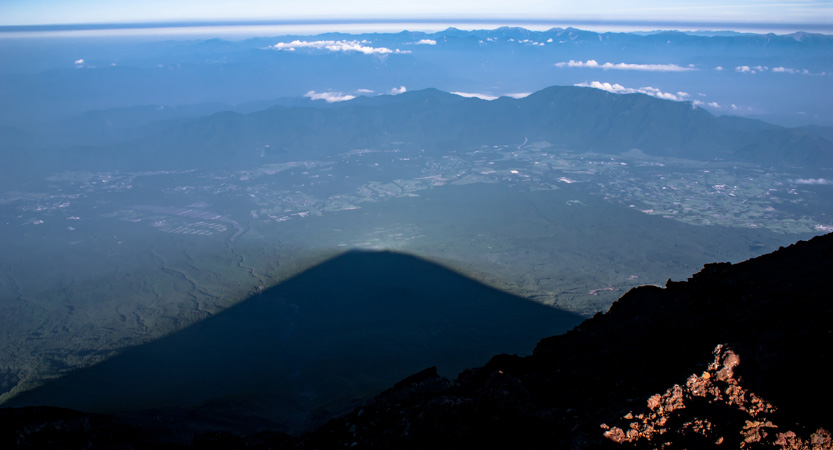
You can sleep on Mt. Fuji, kind of. During the official hiking season, there are sleeping cabins at most of the stations that are dotted along all four trails.
Don’t expect anything fancy, private, or cheap. Expect to pay anywhere between ¥7,000 to ¥15,000 ($80-$120) for the luxury of being crammed into a room with a dozen other strangers and no amenities.
As far as I know, these cabins are first come, first serve. It’s a good guess that they fill up to capacity if the weather is nasty. Fair warning, if you look on booking sites (like hotel.com) you will find listings for Mt. Fuji cabins, but these are not on the mountain. Don’t bother wasting your time.
If you’ve got the sand, you should forgo these cabins make your way to the top without sleeping.
If you’re hustling, you should be able to get from the 5th station to the summit in 6 hours. Most do it in about 8 hours.
Eating On Mt. Fuji
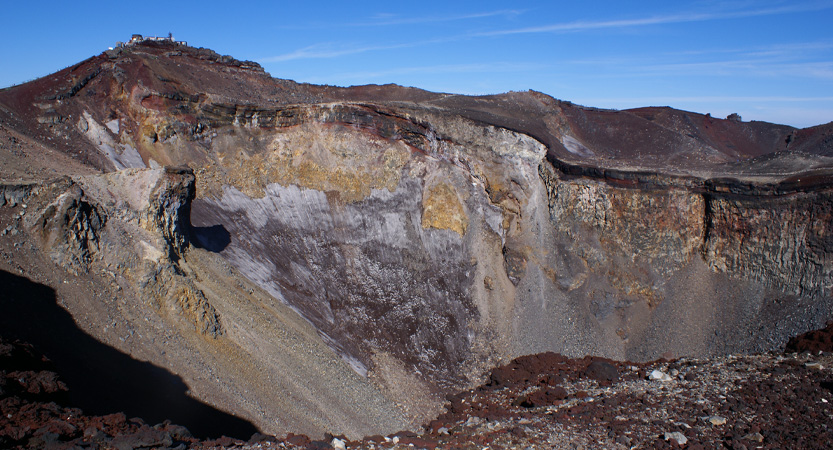
Eating at a restaurant on Mt. Fuji is a bit of a novelty. Most of the stations don’t actually have any options, the exceptions being the 5th stations and the 10th station. You shouldn’t expect anything life changing on top, unless you mean putting you into a lower tax bracket. It’s a king’s ransom for plate of soba noddles.
If you followed my advice above on what to bring with you, you should have enough provisions to sustain you.
A far better option is to save your money and splurge on something decadent when you get back to Tokyo, or wherever it is you’re returning to.
What To Do On Top
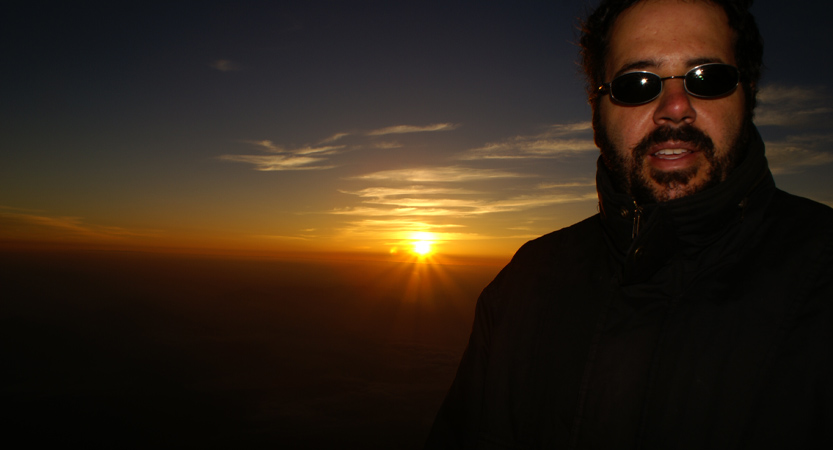
Congratulations on making it to the top of Japan. Many only dreaming of making it here. It’s time for a well deserved rest. Instead of rushing back down the mountain, like every other tourist, you should hang around for a few hours and explore life on top of Japan.
A Sunrise Like No Other
If you’ve done the hike at night, find a place to see the sunrise and plant yourself. The viewing area will fill to capacity long before the sunrise, so if you want a good spot you will have to go and claim it.
I highly recommend doing the sunrise. It really is something powerful to experience. Spiritual and life affirming.
A Trip Around The Ring
After the sun is up, people will start on their decent. If you’ve got the time, you should consider hanging around and taking a trip around the ring, which was the most memorable part of the hike for me. As mentioned a number of times, Mt. Fuji isn’t much to look at up close, however the views from the top are.
The mountain’s, and Japan’s, highest point is located immediately next to the weather station on the opposite side from where the Yoshidaguchi Trail reaches the summit. Expect some lines there.
A walk around the crater takes about one hour.
Post A Letter
You can actually post letters from the top of Fuji-san. Japan’s highest post office is located on the summit, though the operational hours are very limited. During the summer it’s opened from 6am to 2pm.
Sending postcard to friends and family makes for a wonderful souvenir. Send one to yourself so you have a unique keepsake from your trip. Best of all, it doesn’t cost anything extra to post from the top of Mt. Fuji.
To help things go smoothly, you should write your postcards and get the correct postage on them before you climb.
One last thing to note, the post office on top of Fuji-san isn’t opened for the full hiking season, which I sadly found out after getting to the top. It closes a week or two before the official end of the season.
Walking Stick Markers
If you bought a walking sticks with bells and a flag at the 5th station (or have a walking stick you brought from home), you can get a marker burnt into it at each station for ¥500. This makes for a nice memento of your trip, as well as proving how high you made it.
Personally, I forewent all the markers from 6-9 and just got the level 10 marker burnt into my stick on top. A good number of people also remove the bell from their stick and leave it on one of the tori gates at the summit.
Dangers & Annoyances On Mt. Fuji
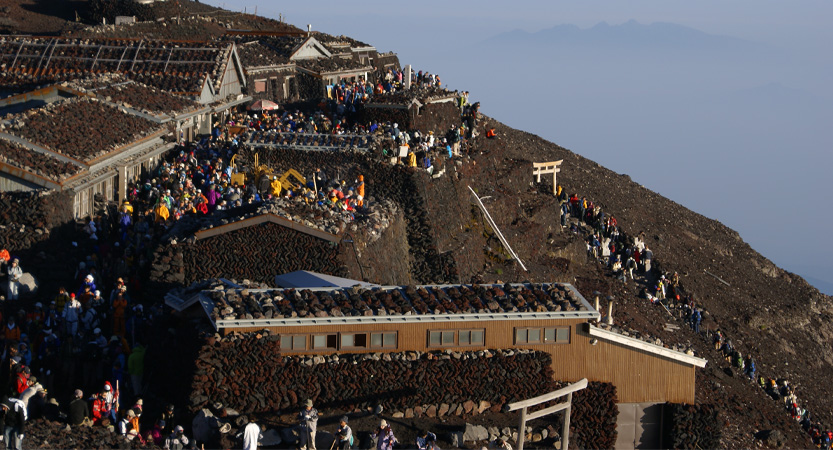
Altitude Sickness
Altitude sickness is one of the more common dangers of hiking to high altitudes. In this case it’s more of an annoyance than a danger, as the altitude of the summit of Mt. Fuji is relatively low, at 3,776m (12,388 feet).
➣ What is it?
Altitude sickness occurs when the human body doesn’t have enough time to adjust to the lack of oxygen. It can be fatal in more extreme circumstances, like on the top of Mt. Everest. Quite a few people who climb Mt. Fuji, including myself, fall victim to altitude sickness. Common symptoms seen on Mt. Fuji can include headache, dizziness, and nausea.
➣ How to avoid:
To avoid altitude sickness, climb at a slow pace and make frequent breaks. Its not a race, though it can feel that way at times.
Bottles of oxygen are an effective tool in preventing and fighting altitude sickness. If you have forgotten to buy some before your trip, they are available, at inflated prices, at the 5th stations and mountain huts.
Not Finishing Where You Started
For most hikers, it’s important to return to the same place you started from, as you most likely have return ticket for the bus or have parked there. If you’re with a group, it’s also pretty important that you all end up in the same location if you get separated. It sounds pretty straight forward, but if you’re not paying attention you could end up descending on a trail that sends you to the other side of the mountain and/or to a different prefecture hours away from where you should be.
➣ How to avoid:
From the top of Fuji there are only 2 descending trails. This is where the color coding comes in handy. Make sure you know the color of the trail you should be on and follow the signs for that (see above if you missed it).
Half way down both of these trails split, so you have to make sure your take the correct trail a second time.
This seems like an easy thing to get right, but consider that you will most likely be tired, not pay attention, and moving at a much quicker pace. Add in that the signs are easily miss-able and you’ve a recipe for disaster.
This is exactly what happened to my group when we did our hike. Despite my 4 warning, one of our party members went down the wrong trail and ended up in a different prefecture. We had to drive 3 hours out of the way to pick her up.
If you pay attention to your trail color, you can easily avoid this issue.
Human Traffic Jams
Believe it or not, Fuji has traffic jams, especially near the top where the path is narrow and there is limited to space to view the sunrise. If you start too late or walk too slow you might find yourself stuck in one of these jams.
It is entirely in the scope of possibility that you will get stuck in line waiting to reach the summit and “miss” the sunrise.
➣ How to avoid:
Try not to get stuck behind tour groups. They tend to move incredibly slow and block the entire path. As soon as you get the chance, pass them. This might mean forgoing a rest or stopping at one of the stations.
If you’re a slow hiker, plan for this and start earlier. If you start off from the 5th station around 6 or 7pm this should give you enough time to walk slow and make it to the top.
You could also limit your breaks and/or stop for less time.
If you’re really not confident that you can do it, you can start in the day and sleep in one of the cabins at the 9th station. Set your alarm for 3am. You should have no issue reaching the summit in time now.
Out of our group of 15, only 3 of us made it to the top for the sunrise. The rest were stuck on line between the 9th and 10th stations. They were pretty close to the top though and were able to see the sunrise fine.
Bullies
In a very uncharacteristic move for Japan, there are some issues with tour guides bulling climbers that are not in their group. I wouldn’t have believed myself unless I experienced it happening. My girlfriend, future wife, was told by a tour guide that she couldn’t sit on a rock and rest because it was a place reserved for his tour group.
This, of course, isn’t true. As long as you’re not blocking the path, you can sit where ever you want. The idea that a rock is reserved for someone’s tour group is just as ridiculous as it sounds.
I’ve also heard stories of tour guides trying to prevent other people from going ahead of their tour group, which makes no sense to me. I didn’t personally see this happen though.
If a tour guide says something like this to you, just ignore them. They aren’t the kings of Mt. Fuji nor do they have any authority or right to tell you what you can or can’t do.
Higher Altitude, Higher Prices
The unwritten law of Mt. Fuji is the higher you go, the higher the prices.
As you climb Mt. Fuji you find that prices climb as well. At the top, you will be able to buy most things you might need, but you’ll pay dearly for it. A small bottle of water runs around ¥500.
➣ How to avoid:
Plan ahead and bringing everything you need. See my supply list above. One of our group members actually brought everything we needed to make cup of noodles. Now, that’s some top notch planning!
A Mountain Of Trash
A sad truth is that Mt. Fuji is a huge garbage dump. Considering this is the symbol of Japan, it’s a huge embarrassment to the country. There are plenty of jerks who leave their trash behind on the trials, but this is also coupled with a weak efforts to correct this problem.
➣ How to avoid:
It’s pretty simple, don’t be “that” person and add to the problem. Anything you take onto the mountain should be taken off. There are NO garbage cans on Fuji, so everything you bring onto the mountain should be taken off.
General Info & Additional Resources For Mt. Fuji
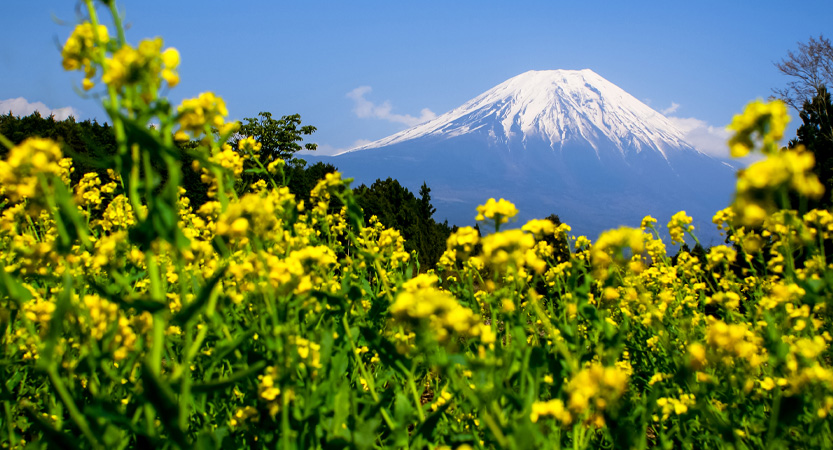
Price: ¥1,000 ($10 US)
Hours: Daily 24h (July to early September)
Website: Mt. Fuji (official Website)
Location: Google
Since you’re here, check out some of our other adventures!



